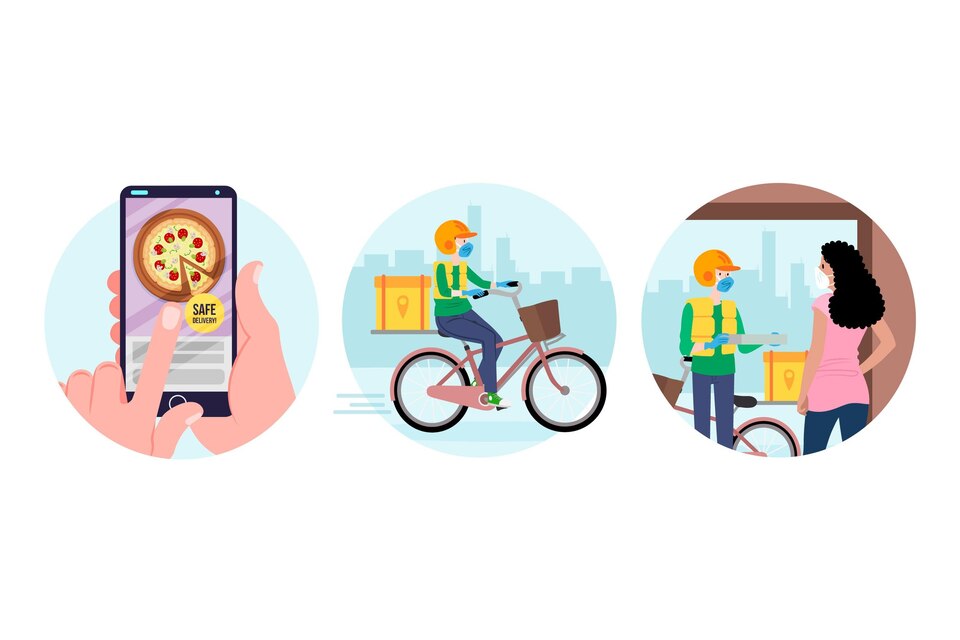Introduction
Meal kit delivery services are becoming more and more popular in today’s fast-paced environment. For busy people and families who wish to enjoy prepared, restaurant-quality meals without the stress of meal planning and grocery shopping, these services provide a handy and time-saving option. Starting a meal kit delivery app might be a lucrative and inventive method to reach a larger consumer base if you already have a food business or are contemplating joining the food sector. This thorough guide will follow you through the stages required to build a meal kit delivery app for your food business, with an emphasis on offering in-depth insights to help you succeed.
1. Market Research
1.1. Identifying Your Target Audience
The cornerstone of your meal kit delivery app’s success is extensive market research. Understanding your intended audience is critical. Who are your prospective meal kit customers? You must take into account demographics, tastes, and geography. Surveys and in-depth market research are highly suggested for gathering vital information that can guide your business strategy.
1.2. Analyzing the Competition
You must evaluate your competition in order to stand out in the competitive meal kit delivery sector. This includes a thorough examination of their strengths and limitations, pricing tactics, and marketing techniques. A comprehensive competitive study will offer you vital insights into what works and what doesn’t in the market, allowing you to distinguish your app and gain a competitive edge.
1.3. Niche Selection
Consider whether you want to target a certain market segment in the meal kit delivery industry. Vegan, gluten-free, and ethnic food are all options. Focusing on a certain specialty may be an effective strategy to differentiate your business and establish a loyal consumer base.
2. Business Plan
2.1. Define Your Unique Selling Proposition (USP)
Your USP (Unique Selling Proposition) is the foundation of your company plan. It distinguishes your meal kit delivery app from the competitors. To attract customers, your USP should be clearly defined and successfully conveyed, whether it’s innovative recipes, quality ingredients, or a simple subscription plan.
2.2. Legal Requirements and Regulations
It is critical to follow all legal requirements, including permits, licenses, and food safety rules. It is strongly suggested that you consult with a legal professional to manage the complexity of the food sector in order to prevent any legal mistakes that might harm your business.
2.3. Budgeting and Funding
A meal kit delivery app involves precise planning and implementation. This should cover app development, ingredient procurement, marketing, and operating costs. Seek money from multiple sources, such as investors, loans, or crowdsourcing, to guarantee you have the required financial means to launch and operate your app.
3. Menu and Recipe Development
3.1. Creating a Varied Menu
Diversify your food selections to accommodate a variety of dietary preferences and meal sizes, and users can create a food app to explore more about these options. Keeping your menu new and unique keeps people interested and coming back for more.
3.2. Sourcing Ingredients
It is critical to have solid ties with dependable ingredient suppliers. Negotiate advantageous conditions in order to secure a steady supply of fresh, high-quality ingredients. Consider sourcing locally and sustainably to appeal to environmentally concerned clients, which may also serve as a unique selling feature.
3.3. Recipe Testing
Extensive recipe testing is essential. Make sure your recipes are not only delicious but also simple to follow. Solicit input from a wide range of taste testers to help you fine-tune your goods and make them the best they can be.
4. Technology and App Development
4.1. Choosing the Right Technology Stack
Work with experienced developers to choose the best technology stack for your meal kit delivery app. Consider user-friendliness, timeliness, and the capacity to securely handle orders, payments, and customer data.
4.2. UI/UX Design
Make user experience (UX) and user interface (UI) design a priority. Customers should have an intuitive and visually attractive experience while using your app. Customers must be able to navigate easily and order quickly in order to remain interested and return.
4.3. App Development
The creation of your app is an important stage. It must manage order processing, customer profiles, payment transactions, and customer support efficiently. Thorough testing is required before launch in order to detect and fix any potential faults or bugs.
5. Supply Chain and Inventory Management
5.1. Building Relationships with Suppliers
Keep good ties with your ingredient suppliers. Negotiate advantageous conditions and assure a steady supply of fresh components. These collaborations are critical to the quality and dependability of your meal packages.
5.2. Inventory Management Software
Inventory management software is necessary for tracking ingredient amounts, controlling expiration dates, and optimizing order replenishment. Efficient inventory management guarantees that orders may be filled without interruption.
5.3. Packaging and Delivery Logistics
Create a simplified packing procedure to ensure the freshness and safety of your meal kits while they are in transit. Choosing reputable courier services and optimizing delivery routes guarantees that your clients receive their purchases on time and in pristine condition.
6. Marketing and Customer Acquisition
6.1. Building a Brand
Create a simplified packing procedure to ensure the freshness and safety of your meal kits while they are in transit. Choosing reputable courier services and optimizing delivery routes guarantees that your clients receive their purchases on time and in pristine condition.
6.2. Digital Marketing Strategies
To reach a wider audience, use a mix of digital marketing platforms such as social media, content marketing, and email advertising. Use data-driven techniques to improve client acquisition and retention. Analyze your marketing efforts on a regular basis in order to fine-tune your strategy.
6.3. Partnerships and Collaborations
Collaborating with influencers, food bloggers, or other companies can help you reach a much larger audience. Strategic alliances and affiliate marketing may be effective methods for expanding your client base, enhancing brand recognition, and acquiring new consumers.
7. Customer Support and Feedback
7.1. Responsive Customer Service
Provide responsive customer service across different channels such as chat, email, and phone. Resolving client concerns and issues in a timely and effective manner fosters confidence and loyalty.
7.2. Feedback Collection and Analysis
Encourage clients to share their thoughts on their meal kit experience. Collect and evaluate feedback actively in order to discover areas for development and increase overall customer satisfaction.
7.3. Continuous Improvement
Create a culture of constant development. Based on feedback and changing market trends, update your app, menu, and customer service on a regular basis. In the competitive meal kit delivery sector, staying adaptive and responsive is critical.
8. Scaling Your Business
8.1. Expanding to New Locations
Consider extending to additional cities or areas after effectively establishing your presence in your first location. Maintaining the quality of your service while expanding requires strategic logistical and customer service planning.
8.2. Diversifying Services
Investigate chances to broaden your offerings, such as catering, ready-to-eat meals, or seasonal specials. Diversification may help you keep your goods fresh while also attracting new client groups.
8.3. Franchising Opportunities
If your meal kit delivery service is a hit, franchising might be a smart approach to grow your company. Create a thorough franchising plan and provide franchisees with support to maintain brand consistency and quality.
Conclusion
Starting a meal kit delivery app for your food business is a fun and possibly profitable endeavor. You may lay the groundwork for a successful business by completing comprehensive market research, building a good business strategy, focusing on quality menu options, investing in technology, and keeping strong connections with suppliers.
Furthermore, consistent marketing efforts, excellent customer service, and a dedication to innovation can help your on-demand delivery app for meal kits succeed in a competitive industry. Remember to stay loyal to your brand’s values and deliver on your promise of convenience and culinary delight to your clients as you expand and adapt. Your on-demand delivery app for meal kits may become a household name in the food sector with the appropriate approach and devotion, providing a valued and convenient service to clients while establishing a profitable business. This guide will help you negotiate the obstacles and possibilities in this expanding business, putting you on the path to success.



